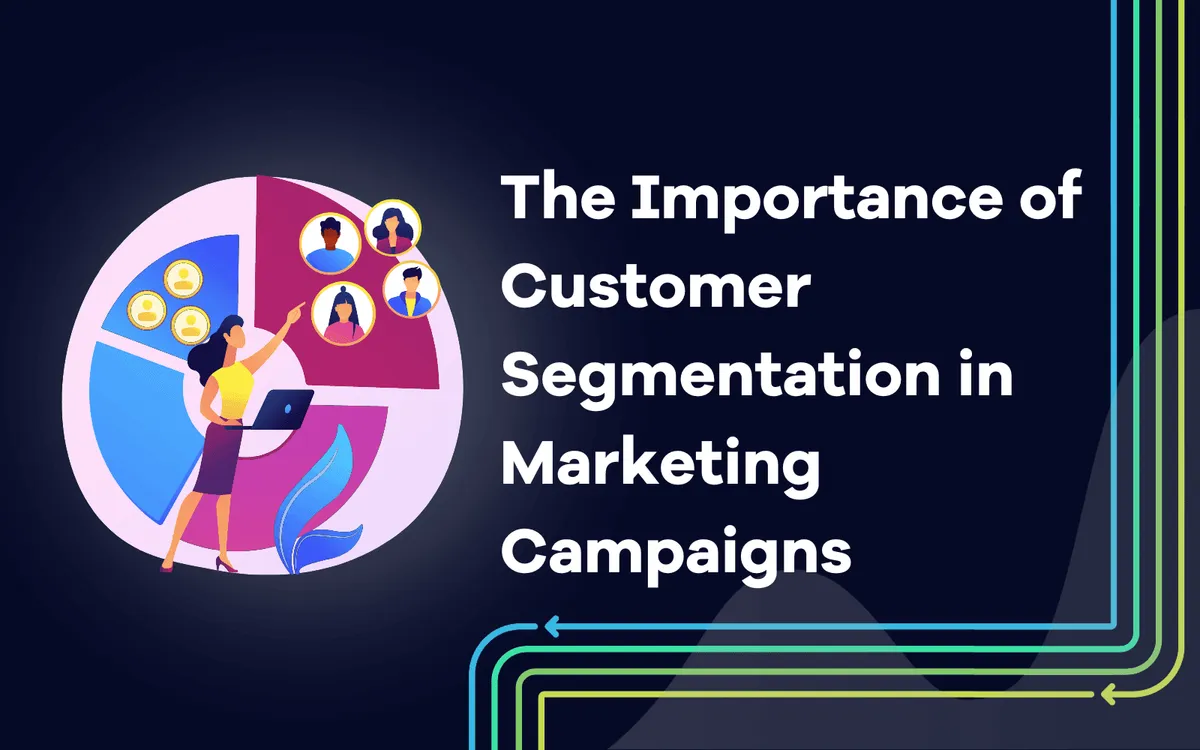
The Importance of Customer Segmentation in Targeted Marketing Campaigns

Jeremy
January 26, 2024
Discover the importance of customer segmentation in targeted marketing campaigns.
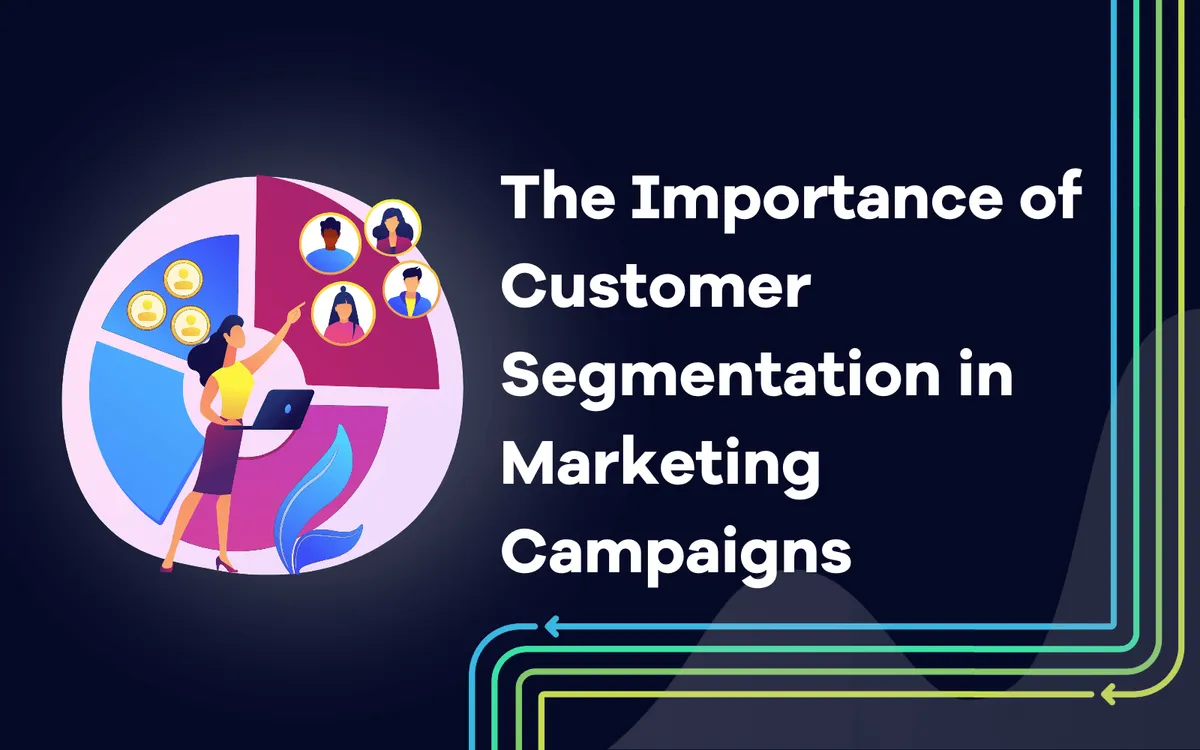
Creating a marketing campaign without considering the depth of your audience is like planning a barbeque without stopping to think if any of your invitees have food allergies or dietary preferences.
While it might feel frustrating to cater to Sara, who’s vegan, Tom, who’s kosher, and Linda, who’s gluten-free, planning a menu that factors them in demonstrates three crucial things:
You see them.
You know them.
You care about meeting their needs.
Just like a good host or friend would look out for the people they’ve invited into their home, your marketing campaigns should also be mindful of the target audience they cater to (no pun intended).
Plain and simple: In today’s fast-paced world, audiences don’t have time for brands that make them feel alienated, uncared for, or unseen. And they certainly don’t have time for brands that misunderstand them.
To truly captivate your ideal customer’s attention and nurture them to conversion, you need to grasp the inner workings of your target audience.
Which individual segments fall under the main group?
Which subgroups need specialized attention?
Who are they really?
What do they need?
Let’s take a closer look at customer segmentation, why it matters, and nine ways you can segment your audience in targeted marketing campaigns.
What is customer segmentation, and why is it important?
Whether you cater to a broad audience like single moms in the US or a niche audience like construction project managers in New York City, there’ll always be subgroups of people within each main group.
This is crucial because each pocket or “subgroup” has needs that must be met before they can like and trust your brand.
For instance, if you own a SaaS brand that targets sales companies, your target audience subgroups might include:
Sales managers
Sales directors
Sales reps
Again, while these subgroups have a lot in common, each has varying needs and characteristics that must be considered before you can nurture them.
For instance, your sales reps subgroup could be looking for software that offers lead scoring features while your sales managers subgroup might be looking for a tool that includes a high-level overview of each month’s sales.
Your sales teams might be searching for a new customer relationship management (CRM) platform, while your sales directors may be looking for hybrid meeting tools to inform the board of directors and team members of the decisions made in a simple and accurate way.
To do this, they can send notes to their team to share information, and this becomes even more efficient if they take minutes at a board meeting to condense all the decisions.
By creating segmented campaigns, you can cater to each individual group and prevent alienating subgroups that need specialized attention.
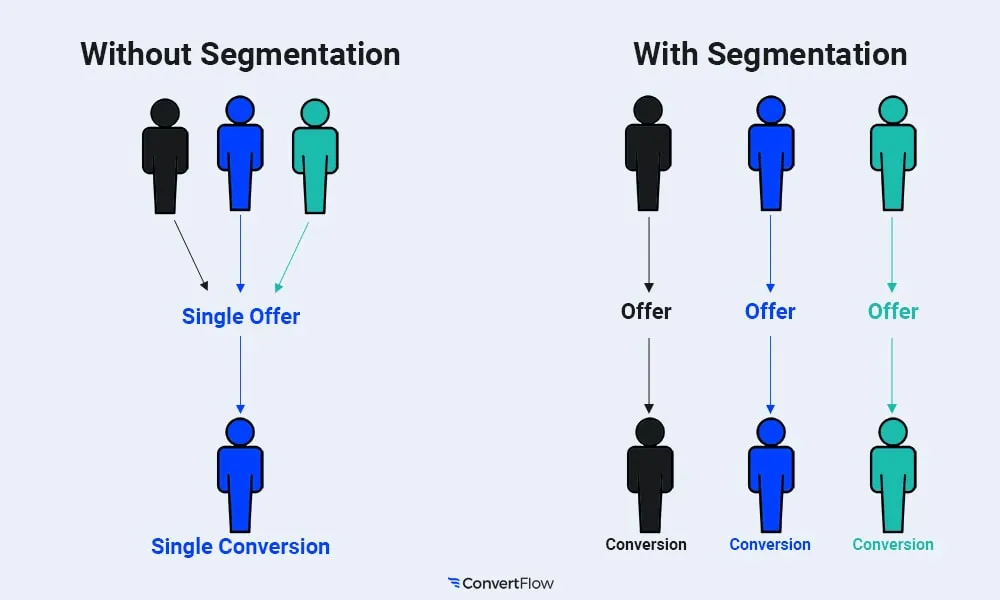
Source: Convertflow
That could mean you have one campaign that highlights the benefits of your lead scoring tool, another that demos your dashboard view styles, another that markets your latest CRM, and another that promotes your meeting tools and templates.
Imagine if you only focused on pushing your CRM features or created ads that raved about your lead scoring tool. Unless you convince your subgroups to start caring about something they didn’t know they needed, you’ll risk alienating them — possibly even losing them completely.
Customer Segmentation - 9 options
There’s no one-size-fits-all approach to customer segmentation.
How you structure customer segmentation in your marketing campaigns will and should depend on your unique offers, goals, and target audience. Running A/B tests can help you pinpoint how to segment your audience effectively.
For instance, let’s say you’re a career coach targeting new graduates, and you’re looking to book out your Q2 calendar slots. In this case, you could test segmenting graduates by engagement history, core objections, and specific needs.
Or, if you offer funding solutions to established e-commerce businesses and want to promote your cash advance product, you might test segmenting by funnel stage, customer type, and the number of employees.
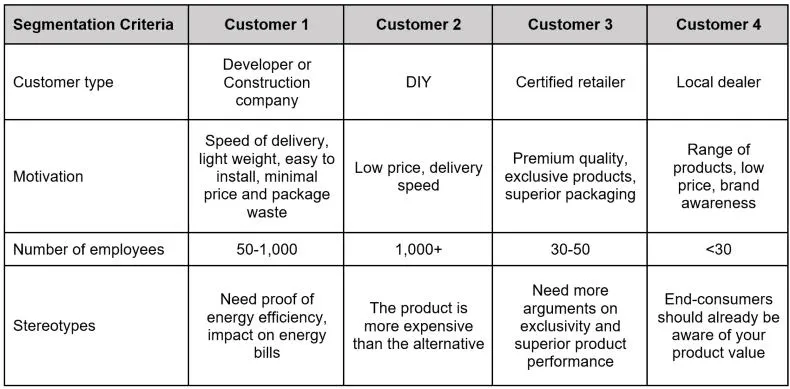
Source: Marketingprofs
Whatever the case may be, to get the best results from customer segmentation, always conduct testing before launching your segmented marketing campaigns.
While this list is by no means exhaustive, here are nine customer segmentation options you can test with industry examples for each category:
#1. Pain points
Pain point segmentation examples: SaaS industry
A subgroup that’s struggling to find a Work OS with in-app messaging features
A subgroup that’s tired of planning their projects in spreadsheets
A subgroup that feels burdened by repetitive, manual tasks
#2. Specific needs
Specific needs segmentation examples: Vegan supplement industry
A subgroup that needs a vegan supplement that prevents iron deficiencies
A subgroup that needs a vegan supplement that stimulates hair growth
A subgroup that’s looking for a vegan supplement that boosts energy
#3. Engagement history
Engagement history segmentation examples: Gaming industry
A subgroup that downloaded your latest Fortnite cheat codes guide
A subgroup that opted into your monthly Fortnite Fans newsletter
A subgroup that viewed your Fortnite Spiderman product page
#4. Likes, preferences, and interests
Likes, preferences, and interests segmentation examples: Coffee industry
A subgroup that’s interested in switching to mushroom coffee
A subgroup that loves cold brews and cold foam
A subgroup that prefers decaf coffee
#5. Funnel stage
Funnel stage segmentation examples: Coaching industry
Bottom-of-the-funnel coaching prospects (hot leads or converted leads)
Middle-of-the-funnel coaching prospects (warm leads)
Top-of-the-funnel coaching prospects (cold leads)
#6. Core objection
Core objection segmentation examples: Skincare industry
A subgroup that’s already buying skincare products similar to yours from a competitor
A subgroup that believes your product is too expensive
A subgroup that doesn’t think they need what you offer
#7. Buying history and habits
Buying history and habits segmentation examples: Grocery industry
A subgroup that shops your Wednesday grocery deals every week
A subgroup that buys groceries from Target online twice a month
A subgroup that buys milk and juice in bulk once a month
#8. Demographic data
Demographic data segmentation examples: D2C E-commerce industry
Baby Boomer shoppers
Millennial shoppers
Gen Z shoppers
#9. Firmographic data
Firmographic data segmentation examples: B2B Consulting industry
Mid-sized companies
Enterprise brands
Small businesses
Customer Segmentation Tools
Segmenting your customers is a wise move in leveling up your business. But to make it fit into your workflow, you’ll need automation tools (read: software) to get the job done.
Let’s take a look at some of the top segmentation tools available.
#1. Hubspot
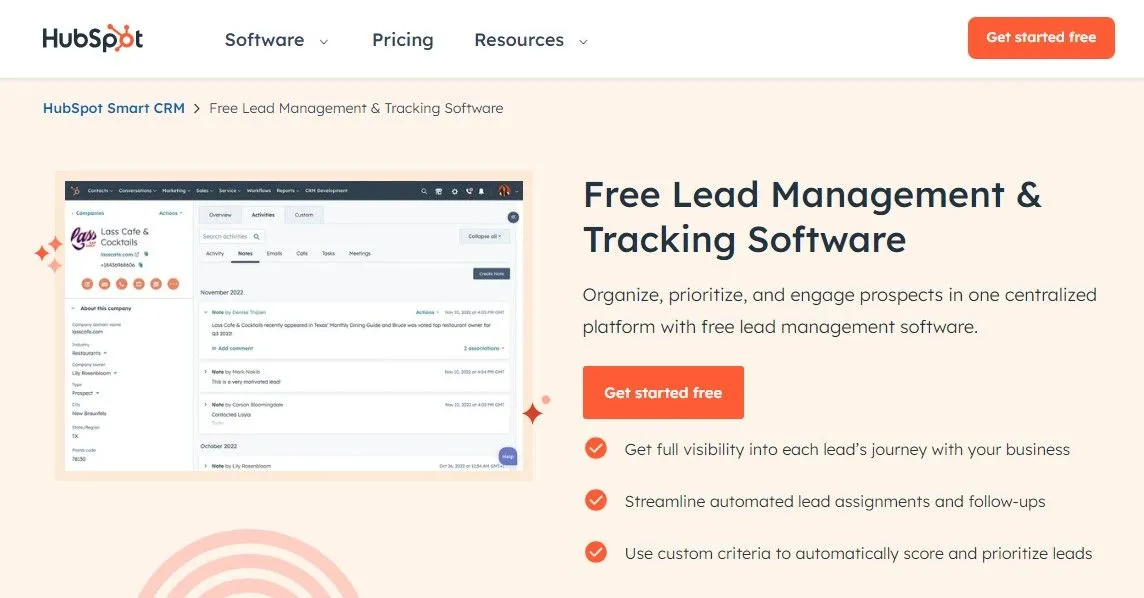
Source: HubSpot
Hubspot’s segmentation allows you to segment active and static lists. Once segmented, you can then score your contacts to segment them further.
Hubspot also features event segmentation to help you keep in touch with customers in specific areas.
You can get started for free, no credit card required.
#2. MailChimp
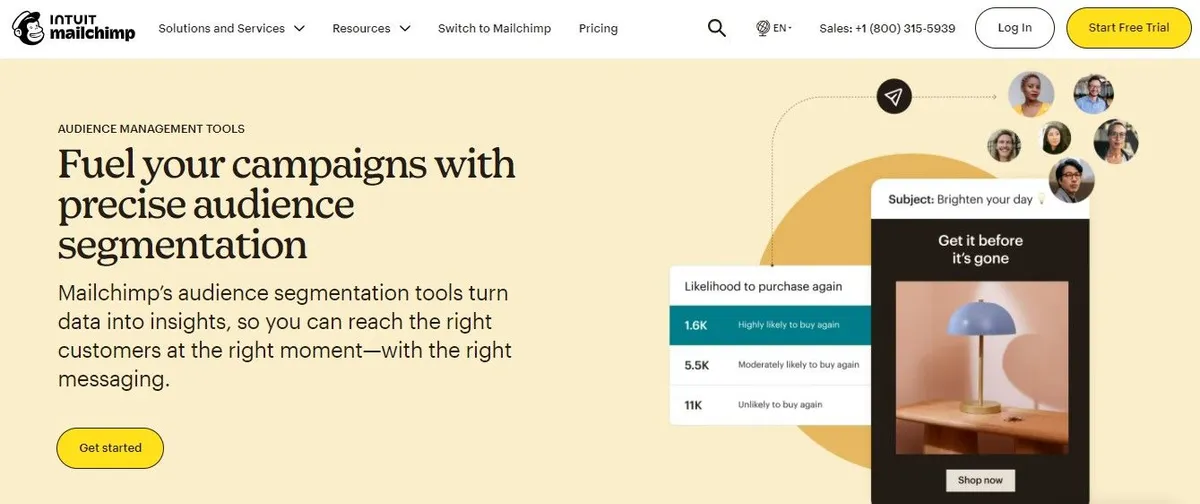
Source: Mailchimp
MailChimp features predictive segmentation. This tool uses analytics data to predict your customers’ buying behavior. Then, it retargets them with personalized marketing messages designed to optimize conversions.
The Standard plan at MailChimp starts for free (for the first month) and then starts at $20/month. There are three additional plans to choose from, including Free, Essentials, and Premium. However, only the Standard and Premium plans include predictive segmentation.
#3. Qualtrics
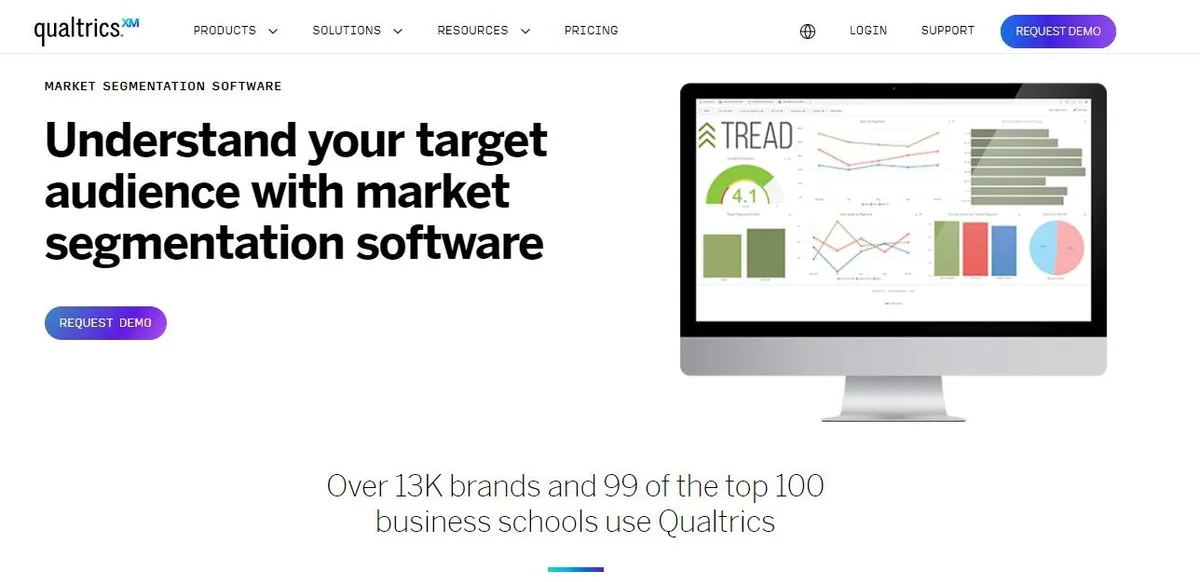
Source: Qualtrics
Qualtrics simplifies your customer segmentation by consolidating it all onto a single platform. It also uses the latest ML (machine learning) and AI (artificial intelligence) to find the holes in your segmentation strategy.
Additional features and options like Qualtrics ResearchServices provide your business with all the insights and analytics you’ll ever need from any segment you want. Get real-time feedback, create studies, develop case studies, and more.
Analyze Your Customer Segmentation
After your customer segments have been up and running for a while, it’s a good idea to run an analysis of how well they’re working. To do this, follow these steps:
Make sure your segments are accurate
Check your customer segments and ensure they’re segmented properly. If any data has changed or you’ve had changes to products or services, you’ll need to take that into account.
Also, consider differences in platforms or the possibility of missing information. Tools like Qualtrics can help here, since all your data will be in one place.
Compare segment performance to business goals
Check your KPIs (key performance indicators) against your goals. Which segments are performing well and which aren’t?
It’s essential to know where weaknesses are so you can address and correct them.
Collect feedback
Gather feedback from internal teams and stakeholders. You can do this through email surveys, forms, or Slack channels.
It’s important that feedback is honest and clear so you can use it to improve systems. Sometimes simple incentives can be effective in encouraging engagement.
Implement improvements
Once you have feedback and have conducted a KPI analysis on your segments, it’s time to create a strategy for improvement. Address each point of underperformance.
When your strategy is complete, it’s time to implement it. Make sure your team is onboard and keep communication open throughout the process. Collaboration is key to a successful strategy.
Wrap up
Launching targeted marketing campaigns takes ample planning and — most importantly — strategy.
By creating segmented campaigns, you can cater to subgroups within your main audience and prevent alienating prospects that need specialized attention.
If you’re ready to nurture your target audience in a profound way, we hope today’s article has inspired you to rethink your marketing approach.
Related blog posts
The Hidden Flaws in Search Volumes and How to Solve Them
Learn how AI Search Volume delivers reliable search volumes by combining GKP, GSC, and Trends so that you can prioritize the right keywords.
1 July 2025
AI Overviews Are Taking Over SERPs
From traffic drops to decreasing CTRs, AI Overviews are shaking up SEO. Learn what is happening and how AccuRanker helps you track AIO.
25 June 2025
How AccuRanker’s AI Models Fix Inaccurate SEO Data
Struggling with unreliable SEO data? Discover how AccuRanker’s CTR, Search Intent, Search Volume, and Share of Voice deliver accurate insights.
1 June 2025




